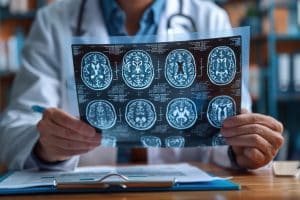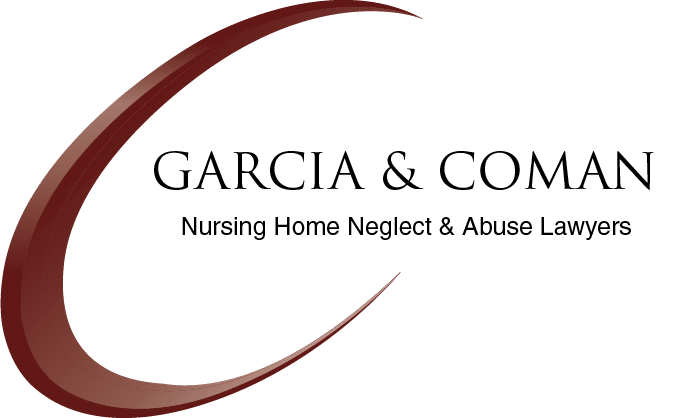Why Are Strokes So Often Missed or Misdiagnosed?
 Strokes are a leading cause of disability and death globally, affecting millions of individuals each year. Despite the high incidence and severe consequences of strokes, they are frequently missed or misdiagnosed, leading to catastrophic outcomes. Several factors contribute to the frequent misdiagnosis or missed diagnosis of strokes, including atypical presentation, inadequate medical knowledge, systemic healthcare issues, and more.
Strokes are a leading cause of disability and death globally, affecting millions of individuals each year. Despite the high incidence and severe consequences of strokes, they are frequently missed or misdiagnosed, leading to catastrophic outcomes. Several factors contribute to the frequent misdiagnosis or missed diagnosis of strokes, including atypical presentation, inadequate medical knowledge, systemic healthcare issues, and more.
Neurology Today reports that “About 9 percent of patients who present to the emergency department (ED) with stroke, transient ischemic attack (TIA), or subarachnoid hemorrhage are initially misdiagnosed.” The study authors also note that “Many of these misdiagnosed patients present with mild, non-specific or transient neurological complaints.”
Atypical presentation of stroke symptoms
One of the primary reasons strokes are often missed or misdiagnosed is the atypical presentation of symptoms. Classic stroke symptoms include sudden weakness or numbness on one side of the body, difficulty speaking or understanding speech, and sudden vision problems. However, many strokes present with less typical symptoms, such as dizziness, headaches, confusion, or fainting. These atypical symptoms can lead healthcare providers to misattribute them to less serious conditions like migraines, vertigo, or even anxiety.
For example, younger patients or those without significant risk factors might exhibit symptoms that don’t align with the traditional stroke profile, causing medical professionals to overlook the possibility of a stroke. Additionally, symptoms can be transient, fluctuating, or mild, further complicating the diagnosis.
Inadequate medical knowledge and training
Another significant factor contributing to the misdiagnosis of strokes is inadequate knowledge and training among healthcare providers. Emergency room physicians, general practitioners, and even some neurologists may not be fully equipped to recognize the subtleties of stroke symptoms, particularly those that differ from the textbook presentation. Continuous medical education is essential, but not all practitioners remain updated on the latest stroke identification and treatment protocols.
For instance, posterior circulation strokes, which affect the back part of the brain, often present with symptoms like dizziness, nausea, or balance problems. These are frequently misinterpreted as benign conditions, leading to a missed diagnosis. Furthermore, advancements in stroke diagnosis and treatment are continually evolving, and without ongoing education, healthcare providers may rely on outdated information.
Systemic healthcare issues
Systemic issues within the healthcare system can also play a significant role in the misdiagnosis of strokes. Overcrowded emergency rooms, understaffed hospitals, and high patient-to-doctor ratios can lead to rushed evaluations and insufficient time spent on each patient. Under such conditions, the likelihood of missing a stroke diagnosis increases dramatically.
Diagnostic tools and tests, such as MRI or CT scans, may not be immediately available in all healthcare settings. Delays in obtaining these critical imaging tests can result in missed opportunities for timely diagnosis and treatment. Additionally, the initial assessment and triage processes may not be adequately designed to identify stroke symptoms, especially in non-traditional cases.
Diagnostic challenges and mimics
Strokes can mimic a variety of other medical conditions, making accurate diagnosis challenging. Conditions such as migraines, seizures, syncope (fainting), transient ischemic attacks (TIAs), and even metabolic disorders can present with symptoms similar to those of a stroke. Differentiating between these conditions requires a thorough and nuanced evaluation, which may not always occur in a busy clinical setting.
For instance, a patient presenting with sudden onset of severe headache, nausea, and vomiting might be experiencing a hemorrhagic stroke but could be misdiagnosed with a severe migraine. Similarly, a transient ischemic attack (TIA), often referred to as a mini-stroke, can present with symptoms that resolve quickly, leading to underestimation of the event’s seriousness.
Communication breakdowns
Effective communication between patients and healthcare providers is important for an accurate diagnosis. However, communication breakdowns are common and can significantly contribute to the misdiagnosis of strokes. Patients may struggle to articulate their symptoms clearly, especially if they are experiencing confusion or speech difficulties due to the stroke itself. Language barriers, hearing impairments, and cognitive issues can further complicate the exchange of information.
Additionally, healthcare providers may not always ask the right questions or gather a comprehensive medical history, leading to incomplete information on which to base a diagnosis. Ensuring thorough and clear communication is vital, yet often challenging in fast-paced healthcare environments.
From a legal standpoint, the misdiagnosis or missed diagnosis of a stroke can have profound implications for nursing home residents and their families. Medical malpractice claims related to stroke misdiagnosis often hinge on proving that the healthcare provider failed to meet the standard of care expected in diagnosing and treating the condition. This involves demonstrating that a reasonably competent provider would have identified the stroke based on the patient’s symptoms and medical history.
For residents and families, the consequences of a missed stroke diagnosis can be devastating. Delayed or incorrect treatment can lead to significant long-term disabilities, reduced quality of life, and even death. Legal recourse may be necessary to seek compensation for the harm caused by medical negligence.
Preventative measures
To reduce the incidence of missed or misdiagnosed strokes, several measures can be implemented within the healthcare system:
- Enhanced education and training: Continuous education for healthcare providers on recognizing different stroke presentations and staying updated on the latest diagnostic and treatment protocols is essential. Specialized training programs and regular workshops can help improve knowledge and skills.
- Improved diagnostic protocols: Implementing standardized stroke assessment protocols in emergency rooms and primary care settings can aid in early identification. Utilizing validated stroke scales and checklists can ensure thorough evaluations.
- Access to advanced diagnostic tools: Ensuring timely access to MRI and CT scans, particularly in emergency settings, can facilitate accurate diagnosis. Investing in telemedicine and remote consultation services can also bridge gaps in expertise, especially in rural or underserved areas.
- Streamlined communication: Enhancing communication strategies between patients and healthcare providers can reduce misunderstandings and ensure comprehensive information gathering. Utilizing translation services, patient advocates, and clear communication aids can be beneficial.
If you or a loved one has suffered a severe stroke due to negligence in a nursing home, it is imperative to take action now. The nursing home negligence attorneys at Garcia & Coman are dedicated to holding these facilities accountable for their failures and ensuring your rights are protected. Don’t let the pain and suffering caused by inadequate care go unaddressed. Contact us today to schedule an appointment, and let us fight to secure the justice and compensation you deserve. Your loved ones deserve the highest standard of care, and together, we can make sure they receive it. Call our office or submit our contact form to schedule a free consultation today. As a national firm, our offices are in Los Angeles, Phoenix, Long Beach, Louisville, and New Orleans.

Stephen M. Garcia represents victims of elder and nursing home abuse and is known as one of the leading civil litigators in the country. He is Senior Partner at Garcia & Coman, where the firm’s practice is focused on elder abuse, nursing home abuse, and wrongful death of the elderly.
Find out more about Stephen M. Garcia

